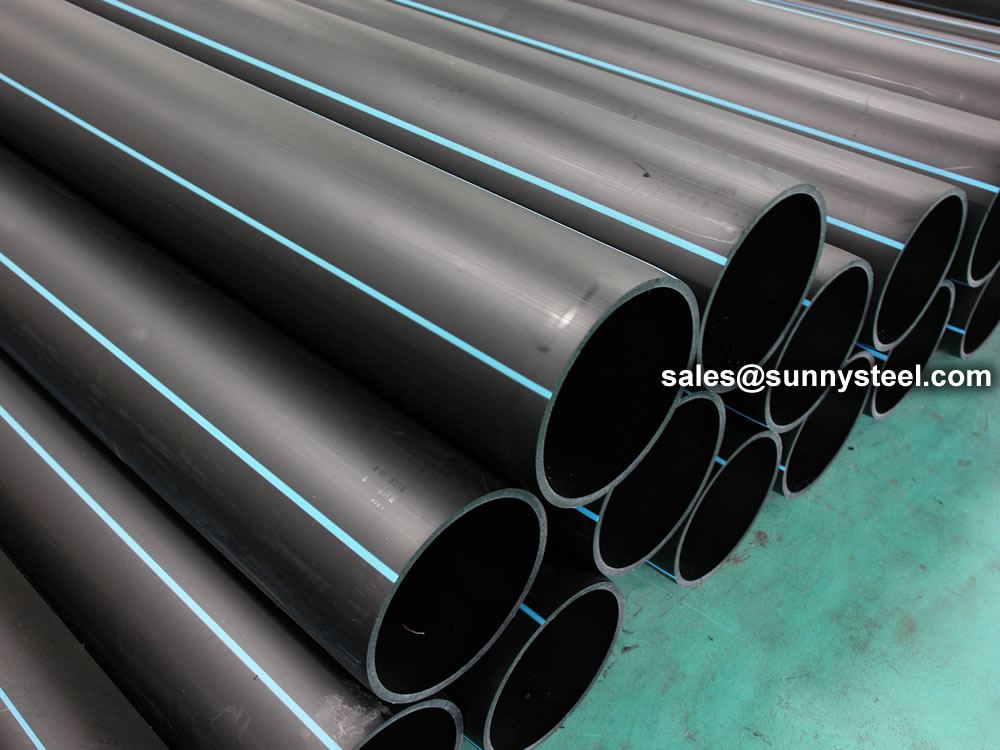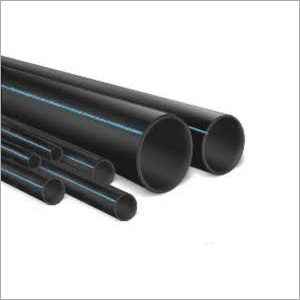How hdpe pipe suppliers Midland TX Are Transforming Agriculture
Wiki Article
Check Out the Production Process Behind High-Quality HDPE Pipeline and Its Applications
The manufacturing process of high-quality HDPE pipelines is complex and systematic. It begins with the selection of raw materials that improve performance. Following this, ethylene undertakes polymerization to form material, which is after that shaped via extrusion. Quality control is paramount, ensuring that the final product fulfills rigid standards. The trip of HDPE pipelines does not finish with production. Their applications throughout different sectors reveal a more comprehensive significance worth analyzing.Comprehending HDPE: Properties and Advantages

High-density polyethylene (HDPE) is a versatile thermoplastic known for its longevity and resistance to various environmental variables. This material displays exceptional tensile toughness, making it ideal for requiring applications. Its low-density structure adds to a lightweight product, assisting in ease of taking care of and installment. HDPE also showcases amazing resistance to chemicals, which minimizes degradation when exposed to harsh materials.
The product's reduced moisture absorption additionally enhances its longevity, making it optimal for usage in pipelines and storage space containers. In addition, HDPE is resistant to ultraviolet (UV) radiation, guaranteeing that items keep their honesty even when exposed to sunshine. Its versatility enables for the production of detailed forms without endangering stamina. The eco-friendly nature of HDPE, usually obtained from recycled materials, contributes to its charm, promoting lasting techniques in manufacturing. Overall, these residential properties and benefits make HDPE a preferred selection for different industrial and customer applications.
Raw Product Selection for HDPE Manufacturing
The choice of basic materials for HDPE manufacturing is important to confirm the last product meets the preferred specs and high quality standards. High-density polyethylene (HDPE) is mostly produced from polymerized ethylene, stemmed from nonrenewable fuel sources such as all-natural gas or petroleum. The high quality of these feedstocks significantly affects the mechanical and thermal residential properties of the last HDPE.Ingredients additionally play a substantial function in improving HDPE's efficiency, consisting of antioxidants, UV stabilizers, and colorants, which enhance durability and resistance to environmental variables. The selection procedure must consider not just the chemical composition of the raw materials however additionally their processing characteristics to assure efficient production.
Moreover, the sourcing of raw products should prioritize sustainability and conformity with ecological regulations, as liable methods are important in today's market. Eventually, cautious basic material option lays the structure for generating premium HDPE pipelines appropriate for varied applications.
The Extrusion Process: Forming HDPE Pipeline
The extrusion process plays a vital role fit HDPE pipes, beginning with precise material preparation strategies that guarantee optimal circulation and uniformity. Similarly vital is the design of the die, which straight influences the final measurements and surface area quality of the pipeline. With each other, these elements contribute substantially to the efficiency and top quality of HDPE pipeline manufacturing.Product Preparation Strategies
Effective production of HDPE pipelines begins with thorough material prep work techniques, particularly the extrusion procedure. Throughout this phase, high-density polyethylene material is first dried to eliminate dampness, making sure optimal flow features. The resin is after that fed right into the extruder, where it goes through heating and melting, transforming into a thick state. This heating procedure is very carefully managed to preserve the product's honesty and performance. The liquified HDPE is compelled with a die, forming it into a continuous pipeline type. Proper temperature level administration during extrusion is important, as it directly influences the material's homes and the last product top quality. As soon as shaped, the HDPE pipe is cooled and reduced to specified lengths, ready for succeeding processing and applications.Die Layout Importance
Precision in die design plays a vital duty in the extrusion process of HDPE pipes. The die acts as the last shaping tool, directly affecting the pipe's dimensions, wall surface density, and surface finish. A properly designed die assurances consistent material circulation, minimizing flaws such as irregularities and weak points. The geometry of the die must be enhanced to suit the details residential or commercial properties of HDPE, including its thickness and thermal behavior throughout extrusion. Additionally, the cooling rate of the product as it passes through the die can markedly influence the pipeline's structural integrity. As a result, purchasing advanced die modern technology is vital for producers aiming to create top quality HDPE pipelines that meet industry requirements and customer expectations.Quality Assurance Measures in HDPE Manufacturing
Although numerous elements affect the high quality of HDPE pipe manufacturing, efficient top quality control actions are essential to assure consistency and reliability in the final item. Secret top quality control practices include strenuous product evaluation, verifying that the raw polyethylene fulfills well established standards for purity and thickness. During the extrusion procedure, specifications such as temperature, stress, and cooling time are closely monitored to preserve dimensional accuracy and architectural stabilityAdditionally, post-production screening is necessary; makers commonly carry out hydrostatic examinations to examine the pipe's stamina and resistance to stress. Visual examinations for surface defects better improve quality guarantee. Certification from appropriate requirements organizations, like ASTM or ISO, supplies an extra layer of integrity. By applying these complete high quality control steps, makers can lessen issues, boost performance, and make certain that the HDPE pipes satisfy the certain demands of various applications, inevitably causing consumer satisfaction and trust fund in the product.
Applications of HDPE Pipe Throughout Industries
HDPE pipelines are utilized across various sectors because of their toughness and flexibility. In water distribution systems, they ensure effective delivery, while in wastewater administration, they supply trusted options for waste transportation. Additionally, agricultural irrigation networks profit from HDPE's resistance to rust and adaptability, making it an excellent selection for modern-day farming techniques.
Water Circulation Solutions
A considerable variety of sectors count on high-density polyethylene (HDPE) pipes for effective water distribution systems. Recognized for their durability and resistance to deterioration, HDPE pipelines are widely used in municipal water networks, farming watering, and commercial applications. Their lightweight nature assists in easy handling and setup, minimizing labor expenses and time. Additionally, HDPE pipes can fit different stress degrees, making them appropriate for both low and high-pressure systems. Midland TX HDPE Pipe Fittings in Stock. The versatility of the material enables seamless combination right into existing facilities, lessening the need for comprehensive excavation. HDPE's resistance to chemical seeping assurances that the water supplied stays safe and tidy, making it an ideal selection for maintaining the quality of potable water across various fields.Wastewater Management Solutions
Efficient water circulation systems additionally lead the way for ingenious wastewater monitoring services, where high-density polyethylene (HDPE) pipelines play a significant role. Prominent for their longevity and resistance to corrosion, HDPE pipelines are suitable for transporting wastewater read the article in numerous settings. Their flexibility enables easy browse around here installment in complicated environments, decreasing the need for extensive excavation. In addition, HDPE's smooth indoor surface area reduces rubbing, boosting flow rates and effectiveness. These pipes are likewise immune to chemical leaching, making sure that pollutants do not jeopardize the surrounding environment. Industries, municipalities, and treatment centers significantly depend on HDPE pipelines for their dependability and durability, making them a favored option for contemporary wastewater monitoring systems. This flexibility emphasizes the crucial relevance of HDPE pipelines across many applications.Agricultural Irrigation Networks
Agricultural irrigation networks benefit substantially from the use of high-density polyethylene (HDPE) pipelines, which supply efficient and trustworthy water shipment to plants. HDPE pipelines are light-weight, making them easy to transfer and install, while their flexibility enables different setups in diverse terrains. These pipes show excellent resistance to deterioration, chemicals, and UV radiation, guaranteeing longevity in harsh farming environments. In addition, their smooth indoor surface area minimizes friction loss, optimizing water flow and minimizing power push to connect air line fittings expenses connected with pumping. The durability of HDPE pipes, often exceeding 50 years, adds to lower maintenance and substitute expenses. Consequently, farmers significantly count on HDPE pipes to enhance watering effectiveness and advertise lasting farming practices, inevitably leading to improved plant returns and resource preservation.Future Fads in HDPE Pipeline Technology
As the need for sustainable and efficient infrastructure expands, innovations in HDPE pipe innovation are positioned to transform various sectors. Emerging patterns include the combination of clever technologies, such as sensing units and IoT capacities, which promote real-time monitoring of pipe problems, reducing upkeep expenses and avoiding leakages. Furthermore, the advancement of advanced manufacturing techniques, such as 3D printing, is enabling the production of complex, customized pipe designs that deal with certain task demands.The focus on recycling and circular economic situation practices is driving the technology of HDPE pipelines made from recycled materials, enhancing sustainability. Improved jointing methods, such as electro-fusion and mechanical installations, are likewise boosting installment effectiveness and dependability. The growing focus on ecological regulations is pressing producers to adopt greener production procedures, guaranteeing that HDPE pipelines not just meet market standards however also promote a more lasting future for framework growth.
Frequently Asked Questions
Just How Does HDPE Contrast to Various Other Plastic Materials?
HDPE outperforms lots of various other plastic products relating to durability, chemical resistance, and flexibility. Its reduced density and high tensile strength make it optimal for different applications, usually exceeding options in both efficiency and durability.What Are the Ecological Influences of HDPE Manufacturing?
The ecological influences of HDPE production consist of greenhouse gas emissions, energy intake, and prospective contamination from manufacturing processes. Furthermore, improper disposal can result in dirt and water contamination, increasing problems about long-term ecological effects.Can HDPE Pipes Be Reused?
Yes, HDPE pipelines can be reused. Numerous facilities approve made use of HDPE for handling, transforming it right into new items. This reusing contributes to sustainability initiatives, reducing plastic waste while saving resources and energy in the production cycle.What Is the Lifespan of HDPE Piping?

Exactly How Do Temperature Variations Influence HDPE Pipe Efficiency?
Temperature level variants substantially impact HDPE pipe performance, impacting flexibility and strength. Heats can lead to softening, while reduced temperature levels may create brittleness, inevitably influencing the pipe's toughness and viability for different applications in diverse settings.Report this wiki page